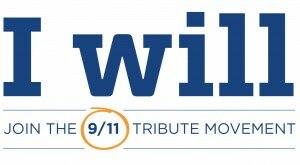 Today’s post comes from Chris Jarvis, Co-Founder and Senior Consultant for RealizedWorth and appeared on Realizing Your Worth on September 6. This is the second of two parts, don’t forget to read The Key To Unlocking the Benefits of Corporate Volunteering, part 1.
Today’s post comes from Chris Jarvis, Co-Founder and Senior Consultant for RealizedWorth and appeared on Realizing Your Worth on September 6. This is the second of two parts, don’t forget to read The Key To Unlocking the Benefits of Corporate Volunteering, part 1.
Companies looking to generate high levels of impact as a result of their corporate volunteering programs need to pay attention to three realities and requirements:
REALITY ONE: Most employees don’t volunteer and are not interested in significant commitments.
On average only one out of three employees volunteer on a regular basis (UK, USA, and Canada). Yet companies have the amazing opportunity to promote volunteerism through corporate volunteering programs. According to the University of Toronto, in 2009, 42% of surveyed employees in Canada volunteered for the first time (in their lives) through the corporate volunteering program.
Business has the opportunity to significantly increase the civic engagement in the communities and nations in which they operate.
REQUIREMENT ONE: Provide employees quality experiences which allow them to explore the idea of volunteering and how it connects to them personally.
Companies need to design employee volunteering programs that allow their employees to fall in love with volunteering. This may involve skill-based activities, but at this stage it’s not about impact – it’s about conversion. It’s about creating a business culture where civic engagement is the norm.
Here’s how to do it:
Understanding The Journey of a Volunteer – Part 1
Understanding The Journey of a Volunteer – Part 2
The Key To An Engaging Volunteer Program
REALITY TWO: One out of three employees does volunteer on a regular basis, but probably not as part of the corporate volunteer program.
Many people view volunteering as a personal activity. Corporate volunteering programs are a nice option for those employees who volunteer regularly, but they’ve already made a connection with a cause or community that fits their interests. A significant number of these employees are volunteering their skills and they are highly committed.
REQUIREMENT TWO: Find and collaborate with these seasoned volunteers.
If you want your program to get off the ground, you need to find the employees who are already volunteering. They are influential because they possess the experience, knowledge and compelling stories to convince their colleagues (who have never volunteered) to try it out.
Here’s how to do it:
REALITY THREE: If the company’s assets are not essential to the employee volunteering program, it’s not having the impact it could.
There are major pharmaceutical companies that plant trees as the main employee volunteering activity. That’s good because it may turn a number of employees on to volunteering – but it’s not good enough.
Why?
Because anyone can plant trees. The pharmaceutical company is not adding anything to the equation.
Even if the pharmaceutical company was encouraging pro bono work among it’s accounts as part of the project, it’s still not good enough. Accountants don’t need their employer to volunteer in that scenario.
Remember the litmus test: If you were to remove your company from the equation, would it matter? That litmus test applies to both skilled and non-skilled volunteering.
REQUIREMENT THREE: Design corporate volunteering programs that depend on the business’ unique tangible or intangible assets ()
Here’s a great example of how to do it:
The Future of Employee Volunteering
Employee volunteering programs need to offer opportunities to experience volunteering and fall in love with it. This takes time. It also requires enjoyable experiences that ask for low commitment.
Companies also need to enable/allow employees to invest their skills and abilities in ways that increase the impact of the nonprofit or community they serve. (Through Taproot, for example! They are brilliant at this.) If your employees connect with a cause or community, they’ll most likely be looking for this kind of opportunity.
In both cases, companies need to design these volunteering experiences in light of their brand and unique resources. This is the key to unlocking the profound benefits of corporate volunteering.

 I want to be very clear – I am a fan of
I want to be very clear – I am a fan of  Today’s guest post comes from
Today’s guest post comes from 
 Dear Sir:
Dear Sir:
 Today’s post comes from Michael Nealis, Interactive Strategy Coordinator for
Today’s post comes from Michael Nealis, Interactive Strategy Coordinator for 




 This afternoon’s post comes from Amy Smith, President of
This afternoon’s post comes from Amy Smith, President of 





 The goal of the 9/11 Day of Service and Remembrance is to create a permanent and positive legacy rekindling the spirit of unity that existed immediately after the Sept. 11, 2001 attacks, and honoring the 9/11 victims, heroes and all those who rose in service in response to the terrorist attacks that changed our nation.
The goal of the 9/11 Day of Service and Remembrance is to create a permanent and positive legacy rekindling the spirit of unity that existed immediately after the Sept. 11, 2001 attacks, and honoring the 9/11 victims, heroes and all those who rose in service in response to the terrorist attacks that changed our nation.
 When you’re looking for a job, your resume is going to be how an employer first gets to know you. Of course you want to include the work experience and education that makes you qualified for a job, but should you include your experience volunteering?
When you’re looking for a job, your resume is going to be how an employer first gets to know you. Of course you want to include the work experience and education that makes you qualified for a job, but should you include your experience volunteering?

